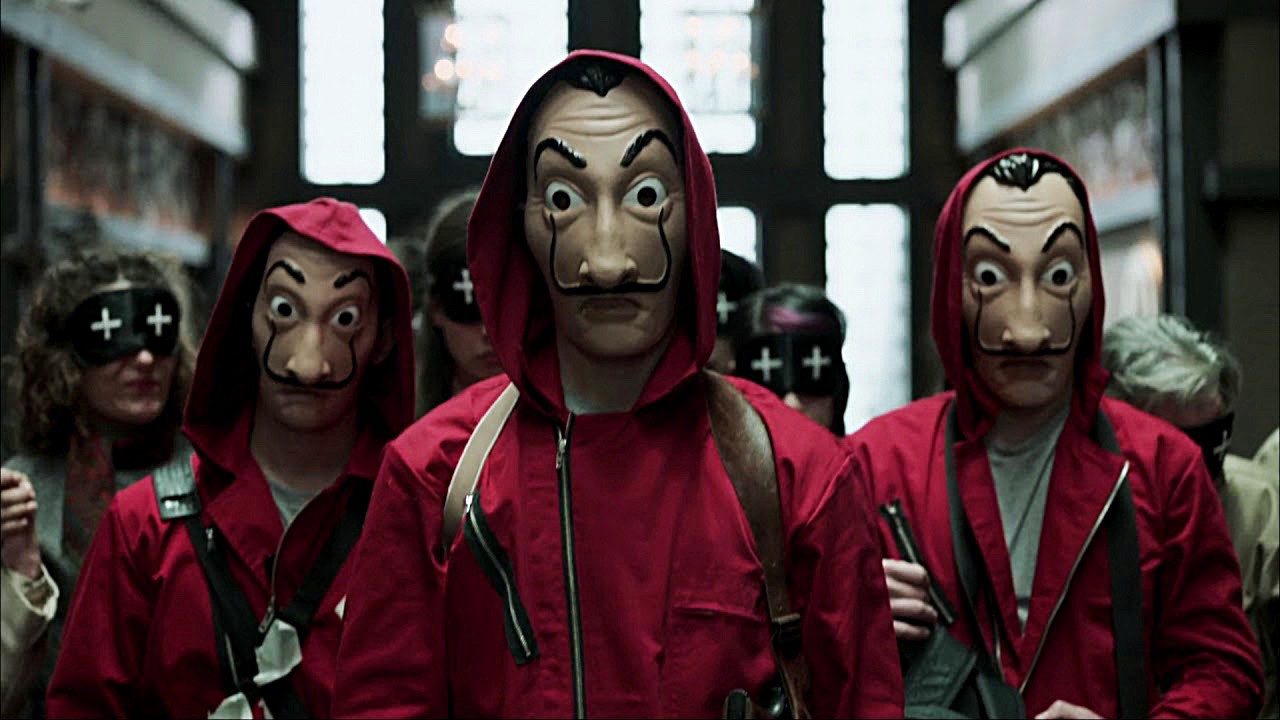According to a US survey from April 2021, Netflix reigns the popularity chart for most binge-watched content streamed on-demand. While competitors like Amazon Prime, Disney+, Hulu, and HBO Max are gearing up to follow suit, none have launched more global hits including backing shows that were deemed to be a virtual flop in their country of origin. If it weren’t for Netflix, the world wouldn’t be harping about La Casa De Papel, aka Money Heist.
Money Heist & Netflix
Money Heist, the Spanish 2-part miniseries hooked audiences with its first part airing in the spring of 2017. By the time the 2nd part launched, the hype had cooled down and the show was about to get shelved.
Netflix picked up the show and packaged it into episodes. The show is one of the few Non-English series that have garnered more than 65 million views once part 4 launched; proof that creativity is universal, and language barriers don’t stand in the way of gripping content.

Money Heist isn’t just a regular show. Its fame isn’t only because of the storyline, the clever scheming, the romantic links, or even the dramatic money raining in Madrid; It’s the Dali masks and red overalls. Money Heist has reinvented the protest of the new era and popularized Salvador Dali’s mask as a form of rebellion across sports, politics, labor movements, climate change, and more.
Creative Activism
That is what Creative Activism strives to do. It finds new ways to instill hope, courage, and fearlessness while standing for a cause. Creative Activism relies on the use of color, symbolism, a song, or even a hand sign to give a strong message. In the case of Money Heist, the thieves’ costumes and the chant of Bella Ciao were used to demand the downfall of capitalism.
Choosing red overalls and the Dali mask was in no way accidental. Historically, the color red has been chosen to represent socialism. And metaphorically, it reflects the struggle, passion, and blood behind the movement.

The Resistance in the Dali Mask
The Dali masks are purposely used to symbolically portray one of the main recurring themes of the series: rejecting modern capitalist society. This symbolic presence could be due to the fact that Salvador Dalí gave life to anti-capitalism in many of his artistic works. The melting clocks in the painting “The Persistence of Memory” are a huge example of it. What many people may not know was that Dali was expelled from the Surrealist group for his politicized views against the capitalist state.

As Professor played by Alvaro Morte puts it, the heist is a symbol of “Resistance, indignation, and skepticism” towards “the system”. Moreover, the thieves seen robbing the rich to give to the poor is a viewpoint shared by Dali (and Robin Hood). What’s interesting is that some viewers interpret the use of the Dali mask as representing foolishness since it was both Dali’s genius and insanity that pushed the boundaries of Surreal Art towards becoming the Surrealism movement’s vanguard.
The symbolism is so strong that Money Heist costumes have been spotted in football stadiums, in climate change protests in Puerto Rico, at Halloween parties, and in political movements around the world.

Money Heist fandom in Pakistan
As Pakistanis, we can relate to Money Heist because there is a stark divide between the rich and poor in our society, where the rich seem to be getting richer and the middle class is dwindling away. We look up to vigilantes who take it upon themselves to fight the unfair distribution of wealth and care for those with limited opportunities.
I leave you with this, whether you agree with the artist’s anti-capitalist fight or watch Money Heist for the thrills, the impact of such content is reshaping the way society approaches Creative Activism.
Stay tuned to Synergyzer for more mind blogging content!

